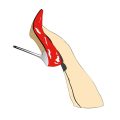1. Understanding Your Exotic Pet’s Temperature Needs
When caring for exotic pets, such as reptiles, amphibians, and certain small mammals or birds, understanding their temperature requirements is essential. Each species originates from a unique natural habitat, whether it’s the humid rainforests, dry deserts, or temperate woodlands. These environments provide specific thermal conditions that are vital for your pet’s health and survival. Maintaining an appropriate temperature range in your exotic pet’s enclosure supports crucial biological functions like digestion, immune response, and activity levels. Without a suitable thermal environment, your pet may experience stress, reduced appetite, metabolic issues, or even life-threatening illnesses. By recognizing the importance of precise temperature control tailored to your pet’s species and natural history, you can help ensure their wellbeing and longevity in your care.
2. Choosing the Right Thermometers and Monitoring Tools
To keep your exotic pet healthy and comfortable, it’s essential to monitor their enclosure temperature with reliable tools. American pet owners have a wide range of thermometer options and smart monitoring gadgets to choose from, each with its own advantages. Here’s a quick comparison of popular choices:
| Type | Description | Pros | Cons |
|---|---|---|---|
| Digital Probe Thermometers | Small digital units with probes for precise placement inside the habitat. | Accurate readings, easy to read, affordable. | Batteries may need replacing; probes must be positioned carefully. |
| Infrared (IR) Thermometers | Handheld devices that instantly measure surface temperatures with a laser pointer. | No direct contact needed, fast results, ideal for spot checks. | Not suitable for continuous monitoring; only measures surfaces. |
| Analog Dial Thermometers | Traditional dial gauges mounted inside the enclosure. | Inexpensive, simple setup, no batteries required. | Less accurate, harder to read at a distance. |
| Smart Home Thermometers & Sensors | Wi-Fi or Bluetooth-enabled sensors connected to smartphone apps. | Remote monitoring, data logging, instant alerts if temps go out of range. | Higher cost, requires Wi-Fi/Bluetooth access, some models need regular calibration. |
For most American exotic pet keepers, combining at least two types—such as a digital probe thermometer for ongoing readings and an IR thermometer for spot checks—is considered best practice. Many also opt for smart home systems like Govee or Inkbird sensors that send real-time notifications to your phone if the temperature drifts outside your preset safe zone. This proactive approach helps prevent health issues related to overheating or chilling. When choosing a monitoring system, consider your pet species’ specific requirements, the size of the enclosure, and your personal tech preferences. Investing in high-quality temperature tools not only protects your pet but also provides peace of mind as a responsible owner.

3. Setting Up Proper Temperature Zones
Creating the right temperature zones inside your exotic pet’s enclosure is key to supporting their health and natural behaviors. Most reptiles, amphibians, and other exotics are ectothermic, meaning they rely on external heat sources to regulate their body temperature. By establishing a thermal gradient—from a warmer basking area to a cooler zone—you give your pet the ability to move around and choose their preferred temperature throughout the day.
Understanding Thermal Gradients
A thermal gradient is simply the range of temperatures available within the enclosure. To mimic your exotic pet’s wild habitat, set up a warm basking spot using a heat lamp or ceramic heater at one end of the tank, while keeping the opposite end cooler. This setup allows your pet to self-regulate: they can bask when they need warmth for digestion or activity and retreat to cooler areas when they need rest.
Establishing Basking Spots
Basking spots should be easy for your pet to access and offer temperatures appropriate for their species—typically 10-20°F higher than the ambient enclosure temperature. Use thermometers at both ends of the tank to ensure accurate readings. Place rocks, branches, or platforms directly under heat sources to create inviting basking sites that encourage natural behaviors.
Maintaining Consistency
Remember that temperature needs may change depending on the time of day or season. Regularly monitor all zones with reliable thermometers and make adjustments as needed. Consistent gradients not only help with activity levels but also support healthy sleep cycles and overall well-being in your exotic pet.
4. Safe Heating and Cooling Methods
When it comes to maintaining the perfect environment for your exotic pet, choosing safe and effective heating and cooling methods is crucial. In the United States, several popular options are widely used among exotic pet owners to ensure their pets’ enclosures stay within the recommended temperature range without risking burns or overheating.
Popular Heating Options
| Device | Best For | Safety Tips |
|---|---|---|
| Ceramic Heat Emitters (CHEs) | Reptiles, amphibians, birds | Install with a ceramic socket; use a guard to prevent direct contact and burns; always monitor temperature with a thermostat |
| Under-Tank Heaters (UTHs) | Geckos, snakes, invertebrates | Place heater under one side of the tank to allow for temperature gradient; use with a thermostat and avoid placing directly under water bowls to prevent cracking glass |
| Heat Mats & Pads | Nocturnal reptiles, small mammals | Never place inside the enclosure; secure externally; check regularly for hotspots and wear |
Cooling Methods
- Fans: Small, low-noise fans can help circulate air in larger enclosures, especially for mammals and birds. Place fans outside the cage and direct airflow away from your pet to avoid drafts.
- Air Conditioning: In hot climates or during summer months, using a room air conditioner can keep ambient temperatures stable. Monitor closely with digital thermometers.
Tips to Prevent Burns or Overheating
- Always use a reliable thermostat with any heat source to maintain consistent temperatures.
- Avoid placing heat sources where your pet can come into direct contact with them—use guards or barriers as needed.
- Create a temperature gradient within the enclosure by heating only one end; this allows your pet to self-regulate its body temperature by moving between warmer and cooler zones.
Remember:
Regularly inspect all heating and cooling equipment for signs of malfunction or wear. Providing both safe heating and cooling options will help keep your exotic pet healthy and comfortable year-round.
5. Troubleshooting Common Temperature Issues
Even with the best setup, maintaining the perfect temperature in your exotic pet’s enclosure can sometimes be challenging. Below, we’ll walk you through how to spot and solve frequent problems so your pet stays comfortable and healthy all year long.
Drafts
If your enclosure is placed near windows, doors, or vents, drafts can quickly lower the temperature and stress your pet. To fix this, move the habitat to a more stable area away from these cold air sources. You can also use weather stripping or draft guards to block unwanted airflow.
Hot Spots
Uneven heating often leads to hot spots, where parts of the enclosure are much warmer than others. This can happen if heat lamps or pads are too close to one side or if there isn’t enough ventilation. Regularly check temperatures at multiple points using digital thermometers, and adjust the placement of heat sources for even coverage. Adding a small fan (outside the enclosure and pointed away from direct airflow) can help circulate air without chilling your pet.
Faulty Equipment
Heaters, bulbs, and thermostats don’t last forever. If you notice sudden temperature drops or spikes, inspect your equipment immediately. Replace burned-out bulbs, broken heating pads, or malfunctioning thermostats as soon as possible. Always keep backup supplies on hand so you’re ready for emergencies.
Pro Tip: Routine Checks
Get in the habit of performing quick daily checks on all temperature devices and keep a log of readings. This proactive step helps catch issues before they impact your pet’s health.
When to Seek Help
If you continue having trouble despite these adjustments, consult a reptile- or exotic-animal-savvy veterinarian or a local herpetology expert. They can offer tailored advice and make sure your pet’s environment supports their well-being every season.
6. When to Adjust and How to React
Recognizing Signs Your Pet Needs a Temperature Adjustment
Your exotic pet’s behavior and appearance are often the first clues that their enclosure temperature is off. Watch for signs such as unusual lethargy, decreased appetite, excessive hiding, or changes in skin color (especially in reptiles). Birds might fluff up their feathers or become less active, while small mammals may burrow more than usual. If you notice condensation on the enclosure walls or your pet frequently moves away from (or toward) heat sources, these are clear indicators that temperature regulation needs attention.
Daily and Seasonal Adjustments
Temperature needs can vary not only by species but also by time of day and season. Many exotic pets benefit from a temperature gradient—warmer on one side, cooler on the other—to allow self-regulation. In summer, monitor for overheating and adjust heat lamps or ceramic heaters as needed. During winter, check for cold drafts and consider supplemental heating if your home temperature drops significantly at night. Always use reliable thermometers placed at both the warmest and coolest ends of the enclosure to guide your adjustments.
Tips for Safe Adjustments
- Make gradual changes: Sudden shifts in temperature can stress your pet.
- Double-check equipment: Replace faulty thermostats or bulbs promptly.
- Monitor humidity: Some heating methods can dry out the air—use a hygrometer if your species requires specific humidity levels.
When to Call Your Exotic Vet
If your pet shows ongoing signs of distress even after adjusting temperatures—or if you suspect illness—contact an exotic animal veterinarian right away. Persistent behavioral changes, prolonged lack of appetite, labored breathing, or visible injuries require professional assessment. Regular checkups with an experienced vet can also help you fine-tune your enclosure setup to keep your unique companion safe and healthy year-round.

